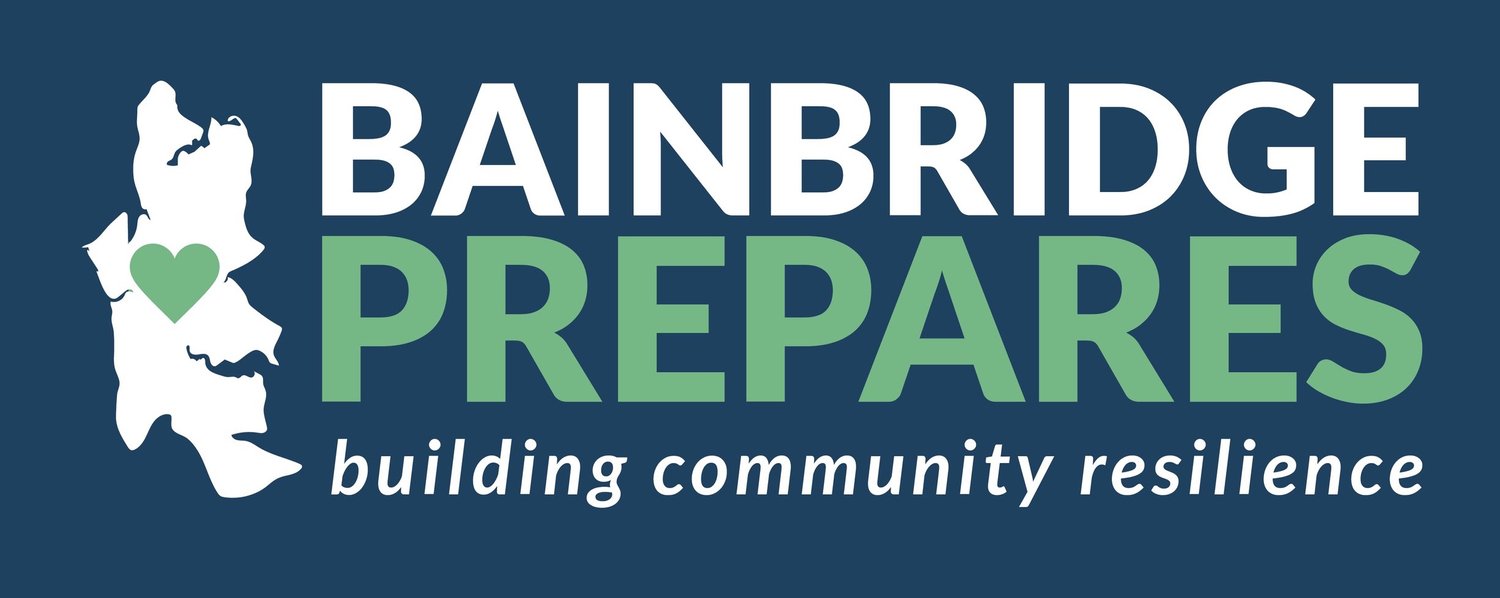Build a Water Supply
water bottles
The Washington State Military Department (WSMD) has created a simple one-year guide—Prepare in a Year—to help people tackle one task per month. We will follow it here to help you prepare in one category every thirty days so that you will make progress monthly and feel ready by the end of the year. If you are preparing your family, make sure your family members know what to do as well. If you are preparing your business, make sure your colleagues or employees are up to date.
The most important resource after an emergency—and one that quickly becomes scarce—is water. It is crucial for every household and business to
prevent loss of existing water supplies in an emergency,
identify potential alternative water sources pre-emergency and be ready to treat that water, and
properly store an adequate water supply pre-emergency.
Prevent Loss
Make sure everyone in your home knows how to shut off the main water valve. In an earthquake, for example, the line could get broken and drain out. Your hot water heater and toilet tanks may also drain from gravity. Turn off the main valve going into your house or apartment and you might be saving yourself an alternative water source.
Identify Alternate Sources
Your hot water tank, your toilet tanks, rain barrels, ponds, and streams could all serve as water supplies in an emergency. You can use untreated water to flush toilets in gravity-drained septic systems or to hand wash clothes. If you treat the water properly, you can use it for cooking and drinking.To make accessed water safe to drink, use any or all of these methods:
Stock up on Life Straws, inexpensive portable personal water filters.
Add purification tables to the water you access.
Invest in a water filtration system.
Purify water and kill most viruses by adding liquid household bleach containing 6 or 8.25 percent sodium hypochlorite but no scents, soap, or thickeners. Use 8 drops of 6 percent or 6 drops of 8.25 percent bleach to each gallon of water. Let the water stand for 30 minutes. Retreat the water if it doesn't have a slight chlorine smell.
Boil water to kill bacteria, viruses, and parasites. Boil for one minute. To improve the taste, salt it or pour it back and forth between two containers.
Distill water by filling a pot halfway with water. Then tie a cup to the inside of a pot's lid, mouth up. Boil the water for 20 minutes. Retrieve the distilled water that has gathered inside the cup.
Tap water that comes from a water system, not necessarily from a well, is already chemically treated and is safe to drink, unless there is a breach in the system, which often happens during flooding, for example.
Store Water
Your emergency supply should contain water for all inhabitants—human or otherwise—for a minimum of three weeks. Calculate one gallon per individual per day—the amount will vary for pets and livestock depending on their size. At least one quart of each gallon should be for drinking per day. You can store less water if you will not need it for cooking—that is, if your food supply doesn't require added water.
Commercially bottled and sealed water may be stored for a minimum of two years (some water is labeled for longer storage). Tap water that you have stored in a sealed container should be rotated out every 6 months. Don't use glass bottles as they will likely break in an earthquake and don't use old bottles that once contained toxic substances. Plastic milk jugs are too brittle to use for water storage.
Always label your water with the storage and/or expiration date. Store it in a cool, dark place.

